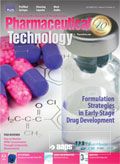Making Decisions Based on Risk
Focusing on whether the product meets its defined quality attributes should help one make reasonable, documentable, and defendable risk-based decisions, according to Susan Schniepp, distinguished fellow at Regulatory Compliance Associates.
Q.: I am a quality assurance professional in a manufacturing plant. I still struggle with the concept of risk-based decision making. Can you provide me some advice on how I can make appropriate risk-based decisions?
A.: The pharmaceutical industry continues to change rapidly. Over the past 10-15 years, there have been a number of developments that have impacted how companies approach various aspects of their business including the emergence of the generic industry, biosimilars, virtual companies, contract service organizations, compounding pharmacies and 503B outsourcing facilities, mergers and acquisitions, and more sophisticated information technology platforms. The complexity of the industry today makes risk-based decision making seem convoluted at best.
Risk-based decision making is difficult no matter what position or department you are in at a company or how many years you have been in your position. Most employees are comfortable when the answer seems to be yes or no. It is much harder to make a decision when the answer lies somewhere in-between the yes and no. So, how do we go about making an appropriate risk-based decision? There isn’t any magical formula or calculation to guide you. To make an appropriate risk-based decision, we need to understand the interrelationship of the product, process, and any associated deviations and investigations that occurred during manufacturing.
Let’s take a look at a situation that might help clarify the risk-based decision process. You are the vice-president of quality for a manufacturing organization. One of your products for treatment of cancer is on the drug shortage list because the current API supplier has decided they will no longer provide the API. You were trying to secure a new API manufacturer but could not find one that could reliably provide the API that met the expected quality attributes, so the company has decided to cease providing the drug to the market.
You have the last three available lots of the API and have manufactured the associated final product lots. The product is aseptically filled and then lyophilized. During the inspection of the second product lot, the quality inspectors inform you that they have detected a defect and the lot has failed its second acceptable quality limit (AQL) for the defect. The defect detected is defined as product between the vial and the stopper and it displays as a white dot the size of the head of a pin. The standard operating procedure (SOP) defines this defect as ‘cosmetic’. The inspectors also inform you that they expect the product lot will fail the third AQL inspection and that the product will need to be rejected per standard operating procedure requirements. They also inform you that the product has passed all other quality attributes including those determined by chemical analysis and that there were no deviations associated with the manufacturing. You ask your inspectors to halt the inspection for this particular defect while you look into the matter. The question you need to ask is: what further information do I need in order to be sure I make an appropriate decision?
The easy decision is to perform the third AQL inspection, fail the lot if it doesn’t pass, and document the reason for the failure. The harder decision is to make a risk-based decision to release the lot. Let’s take a look at some additional information available to help you make your decision. The first thing to determine is the medical indication for the product. In this case, the product is a cancer treatment drug. The second piece of information to determine is if the cosmetic defect has any impact on the potency of the product. In this case, through laboratory analysis, it is determined that the potency or stability of the product is not affected by this particular defect. Based on this information, you document a material review of the situation and recommend ceasing inspection of the cosmetic defect and releasing the product.
What information made you comfortable in making this decision? Because this is a life-saving drug that is in short supply, you realize that doctors will potentially need all of this product to be able to safely transition patients to an equivalent treatment because it could take more than one treatment cycle for the doctors to find an appropriate drug substitution. You were also able to determine through chemical analysis the potency was unaffected by the defect and would not pose a threat to patient safety. You will still need to investigate the defect and try and determine its root cause, but based on the data available you should be confident that the product is safe for the patient. If there is any magic formula to risk-based decision making, it is to keep patient safety in mind and focus on whether the product meets its defined quality attributes. If you keep these points in mind you should be able to make reasonable, documentable, and defendable risk-based decisions.
Article Details
Pharmaceutical Technology
Volume 41, Number 10
October 2017
Pages: 106
Citation
When referring to this article, please cite it as S. Schniepp, “Making Decisions Based on Risk," Pharmaceutical Technology 41 (10) 2017.
